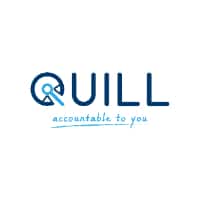
By Legal Futures Associate Quill
Read on for a helpful guide on how legal practices can successfully go paperless – from how to organise law files to best practices to common mistakes law firms should avoid. Going from paper-heavy to paper-light, or even fully paperless, is an achievable goal for law firms, as long as you take the right steps on your journey.
Six common mistakes to avoid when going paperless
To avoid the common mistakes lots of law firms make, here’s what not to be, have, do or get…
1. Too ambitious
Is it really a paperless office you’re aiming for? Or is it actually paper-light? Or perhaps just certain departments to begin with? Think over your paper strategy carefully upfront and plan accordingly to accomplish your objectives.
2. Using your on-premise file servers (G:drive, Sharedrive, Dropbox, etc.)
Basic filing systems don’t offer the sophisticated tools that law firms need to see time savings, such as: easy indexing, labelling or searching for files based on matters, profiling, versioning and scanning, auto-populating legal forms, time recording, court bundling and syncing within your existing practice management software. Read more about why.
3. Pitching value too high
Rushing to buy an exorbitantly priced scanner could be a costly and timely expense and may not address all the issues you have with going paperless at your law firm. Think through where best to invest and find a solution that fits your requirements. Remember – you don’t always need all the fancy bells and whistles but you do need something that’s designed for your sector.
4. Bodged system
A disorganised, standalone, generic document management system with no time recording function does your law firm no justice. If hosted on on-premise servers, you’ll need a generous IT budget and internal technical manpower too. Instead, opt for a cloud-based document management system that’s built specifically for the legal industry.
5. Taking little notice of cybersecurity
While off-the-shelf document management systems deliver accessibility improvements, they do come with cybersecurity concerns. Remember the Dropbox data leak of 2016 which compromised 68 million user accounts? And that’s not the only major data breach of its kind. If your clients’ confidential data is hacked in this way, you’re violating the Data Protection Act, GDPR and SRA Standards & Regulations. Look for a document management solution that boasts ISO 27001 certification, physical protection measures, data encryption, strong authentication controls, anti-virus scanning and regular software updates.
6. Not managing change
This is a change project and humans are hardwired to resist change. It’s not a solo journey either. You’re bringing along a herd of people with you. Adopt a change management mindset and success is more assured.
“We’re entirely paperless. In order to achieve our paperless vision, we documented our processes, ensured our staff are well disciplined and now enforce it strictly. If we have the internet, we can work from anywhere.” – Johdi Hutchins, Partner & Practice Manager, Galloway Hughes Solicitors
9 steps to successfully going paperless
So, we’ve identified there’s a WRONG way to go paperless but what’s the RIGHT way? Follow these ten steps to stay on the correct path…
1. Build your paperless foundation
In the same way a building’s foundations are essential, so too is your paperless quest’s foundations. At the very basic level, you need three elementary things:
– A scanner to convert paper documents to digital documents
– A place to store ALL your digital documents, e.g. cloud-based law practice management software
– Software to view and work with digital documents, such as Adobe Professional
2. Get the starting point right and your people will buy in to your ideas from the word ‘go’.
Invest in a document management system purpose-built for law firms
You need to have a central place to store ALL your digital documents that’s fit for purpose – which is why a document management system is best practice. Here are your document management “must-haves”:
– Cloud based
– Simple and secure
– Allows you to easily create, edit, store, preview, locate and manage all case documents
– More sophisticated document profiling, tagging, comments and notes
– Time capture baked in
– Syncs with Outlook, Excel, Word, etc. so it manages documents AND emails
– Document check-out/in and versioning allowed
– Integrates with legal forms and document bundling tools
– File and folder permissions
With the advanced features you get with a legal-centric document management system, there’s a reason why choosing just an on-premise shared drive like G:Drive, ShareDrive or Dropbox just doesn’t cut it.
3. Digitise your onboarding and correspondence intake process
Paperless working is about a whole lot more than just a big scanner for hard-copy post. First, we suggest you commit to switching to a paperless intake process within your practice management software as an important initial step to going paperless. We also suggest making sure your document management software has Outlook integration so emails and attachments are saved automatically to cases and are stored within one system.
4. Capture time and attendance within your document management system
Another must-have integration is digital time recording with accompanying attendance notes. Time is a law firm’s currency and attendance notes are one aspect of your professional obligations, after all. Where time’s concerned, even if you operate on a fixed fee basis, it’s a useful measure of your efficiency and assists with employee wellbeing. Integrate time recording within your paperless practices.
5. Manage your outgoing and incoming post
Did you know you can actually outsource your entire post-room function to a dedicated bureau with Quill Post? Otherwise, make sure your entire practice knows what the protocol is for each and every type of post or scanned documents – how it should be saved, where it goes, when it should be archived, etc.
“In our paperless crusade, along with Quill, VoIP and Office 365, we scan everything as soon as it arrives. Important documentation is then stored in a cupboard and shredded if it’s still gathering dust after six months. In order to achieve our paperless vision, we documented our processes, including defining naming protocols for Quill’s bespoke folders so that we avoid needle-in-haystack situations when locating files, and we ensured our staff are well disciplined. Plus, we enforce it strictly.” – Johdi Hutchins, Partner & Practice Manager, Galloway Hughes Solicitors
6. Invoice and receive payments electronically
It’s not unusual for law firms to send invoices by email then put a hard copy in the post. Switch to email alone and encourage your suppliers to do the same. Electronic payments are another option. These work by sending a unique, secure link to a payment portal. You’ll have less debtors and will get paid quicker as a result. Look out for Quill’s integration with Legl coming soon.
7. Choose the right tools and technology
Replace piles of paper with multiple computer screens which perform the same paper-based tasks without any actual paper involved. A scanner (or scanning app on your mobile) is useful but it’s not the be all and end all. And being paperless is absolutely not about multiple photocopiers.
8. Explore integrated value adds
See where else you can go digital to help convert as much as possible into paperless. For instance, consider integrating your legal forms into a practice management system so you can auto-populate forms and submit electronically. Other areas to ponder are electronic signatures or our digital AML checking, court bundling, bank account verification and SMS messaging tools to share important updates by phone instead of paper. Everything you need to go paperless is available from your trusted one-stop-shop.
9. Manage the change
This is potentially a big journey. If not managed well, you’ll have a disparate gang of people heading in vastly different directions. Manage the change project and you’ll reach your destination together. Essentially, this is about performing an internal review of your current status, deciding your desired business transformation outcome, and working out how to make your paperless vision a reality as a collective whole. With your employees actively voyaging with your leadership team, you’ll change people’s habits so that the newly introduced practices quickly become the norm.
“At Luqmani Thompson, we’re on a mission to go fully digital. We certainly encourage other firms we speak to, to get on board the train too before it leaves the tracks. Where our business is concerned, it’s Quill and DocsHub powering the engine.” – Jawaid Luqmani, Partner, Luqmani Thompson & Partners
Watch webinar here: https://youtu.be/tnp5iYxfW2o
You can download the eBook here.












